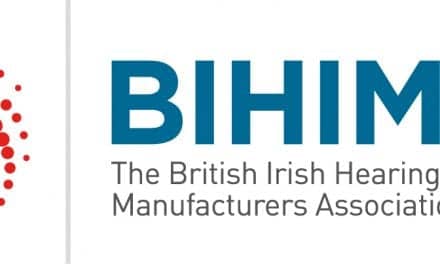By Marshall Chasin, AuD
Using the phrase “digital delay” in the hearing aid field is akin to saying that there is too much salt on a meal or the sound is “ugly.” It’s extremely vague and subjective. Understandably, audiologists and those working in the hearing aid industry have long sought to fit and design hearing aids that, along with any assistive listening accessories, minimize digital delay. As little as only five or six years ago, the minimum hearing aid delay for just the analog-to-digital (A/D) stage to the digital-to-analog (D/A) stage, without any digital processing, was on the order of 5 milliseconds. Today, modern hearing aids can do the same thing in only 50 microseconds—a 100-fold improvement. But as far as our hard-of-hearing patients are concerned, is it really an improvement?
Can the average hard-of-hearing person with a sensorineural hearing loss notice an appreciable digital delay? Or stated differently, even if they can notice a delay, does this contribute to a significant degradation in the understanding of speech or the appreciation of music?
Is Digital Delay Beneficial?
Many modern hearing aids use digital algorithms such as noise reduction that impart significant digital delay, and these processing techniques seem, in many cases, to be beneficial. There are now also a number of Smartphone-based apps that are wonderful at stripping away background noise, and these report digital delays on the order of 50 ms.
Delays of sound naturally occur and, if long enough, can wreak havoc on those who rely heavily on lip reading cues. Given the slow speed of sound (340 m/sec), even if the speaker is only several meters away from the listener, even without a hearing aid, the sound is delayed by 6 ms (2 meters/340 meters/second).
Seeing and Hearing a Difference
Following are two video files. The first, Video 1, features a progressively delayed audio signal, but with a video where lip reading is possible. There is a progressive desynchronization of lip movement with the audio signal. But in a conversation with a high degree of context and minimal extraneous background noise, this degradation is minimal, even with delays on the order of 70ms to 80 ms.
The next file demonstrates a more serious effect, where the unaltered and the progressively delayed speech are overlayed on top of each other. There is a noticeable effect, but again, the difference doesn’t appear that significant until reaching the point of a 30 ms to 50 ms delay.
Effect of Digital Delay Depends on the Details
Despite the digital delay numbers that are stated on specification sheets for hearing aids and accessories, depending on the design of the hearing aid, the stated digital delay may only be a low-frequency phenomenon with minimal delay for higher frequency sounds.
Some hearing aids use an analysis technique that uses a band of filters, and this is where digital delay may be more of an issue, but only for lower frequency sounds. Other designs, such as those that use an FFT form of analysis, would have similar digital delays across the frequency range. And if the hearing aid is fit to a person who requires only higher frequency amplification, this frequency-dependent delay (e.g., band of filters) may be even less of an issue than for a patient who requires both low- and high-frequency amplification.
As audiologists, making a statement such as “We want the delay to be as minimal as possible” is akin to making a motherhood-and-apple-pie statement, but perhaps we have gotten too tied up with numbers?
Marshall Chasin, AuD, is an audiologist and the director of auditory research at the Musicians’ Clinics of Canada, adjunct professor at the University of Toronto, and adjunct associate professor at Western University. You can contact him at [email protected].




